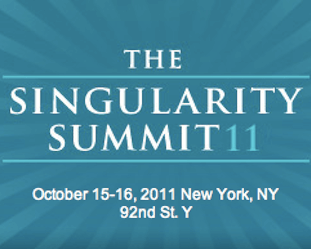New York City was host to geeks from all walks of life this past weekend, as scientists, engineers, futurists, and other forward-thinkers converged for Singularity Summit 2011. It was 2 days of talks that touched on all aspects of the future, from cutting edge research in regenerative medicine and artificial intelligence to the coming disruption in traditional economics and even religious faith. It was fast-paced and dense at times, but also inspirational and stimulating. If you weren’t there, hopefully this post will give you a glimpse into what it was like. It should also inspire you to be there next year, when the Summit will return to the San Francisco Bay area.
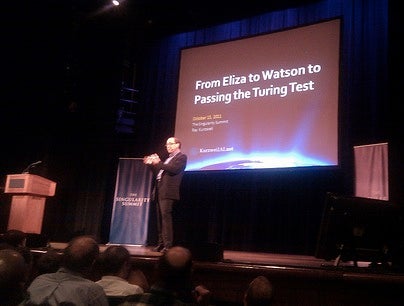
Ray Kurzweil – From Eliza to Watson to Passing the Turing Test
Ray Kurzweil was the opening speaker to kick off Singularity Summit 2011 and he talked about his latest book project on building an artificial mind. He dropped some tidbits of what to expect in the book, including his assertion that translating the human neocortex into lines of code should only be about 1 million lines. Sure, that’s quite a bit of code, but not an impossible task. He went further to say that in terms of RAM, this should translate into approximately 25 megabytes when accounting for the redundancy of connections in the human brain. Of course, this is a bold prediction, but that’s what Kurzweil is known for. And not surprisingly, not everyone agrees with the claims he makes. Kurzweil spent the better part of his talk addressing a recent piece in Technology Review by Microsoft co-founder Paul Allen entitled “The Singularity Isn’t Near”. The article is a direct rebuttal of Kurzweil’s predictions (and his book “The Singularity is Near”). Kurzweil’s main counterpoint to Allen’s article is that Allen spends his time disputing Kurzweil’s article (The Law of Accelerating Returns) from 2001, admitting that he hasn’t read the much more detailed and comprehensive book “The Singularity is Near” that Kurzweil published in 2005. While it seems that Kurzweil is open to criticisms of his ideas, he was clearly incredulous that someone would attempt to discredit them without having actually sifted through the details.

Stephen Badylak – Regenerative Medicine: Possibility and Potential
Hands down, one of the most exciting talks of the first day. Dr. Stephen Badylak was able to wow the crowd with his work on regenerative medicine and though his talk was at times heavy with medical jargon, he still got his point across loud and clear. He began by describing several diseases/injuries for which current treatment is nonexistent or woefully inadequate, including stroke, limb loss, and esophageal cancer. Working at the McGowan Institute for Regenerative Medicine at the University of Pittsburgh, Badylak and his team have been experimenting with what’s known as the extracellular matrix (ECM), the structural component in animal tissue outside of the cells. Research has found that besides providing support for cells, the ECM acts as a “information superhighway”, allowing cells to communicate with each other. Part of this communication involves molecular signals that recruit stem cells after injury and indeed, grafting pig ECM at sites of human injury have been shown to work better at regenerating tissue than injecting stem cells directly. In the past, we’ve covered the application of Badylak’s work in regenerating severed fingertips as well as muscle tissue. In this talk, he also highlighted the use of pig ECM for treating esophageal cancer. In a remarkable video, Badylak showed his team removing the diseased lining of the esophagus through a patient’s mouth (he described it as “sort of like removing your sock inside out”) and then “wallpapering” the esophagus with the ECM, allowing the patient to regrow a new lining and avoid removal of the esophagus altogether! Very exciting work and one that should revolutionize medical treatment in the near future. Correction: one that is ALREADY revolutionizing medical treatment!

Sonia Arrison – 100 Plus: How the Coming Age of Longevity Will Change Everything, From Careers and Relationships to Family and Faith
Sonia Arrison gave an interesting presentation based on her book of the same name (if you were lucky enough to be present, you also received a free copy of the book). We recently reviewed the book and she didn’t present anything new in her talk. It was a fairly optimistic outlook on what we can expect as life expectancy continues to go up, pushing past 100 and approaching 150 years. Sure, so far our advancements in medicine and health have been made by tackling the so-called “low-hanging fruit” such as nutrition, germ theory, etc. but we are now making considerable progress in fighting the diseases of aging like cancer. One interesting point she made was that we can expect to see new stages of life arise as we live longer. A few centuries ago, you were a child, then an adult. That was it. Then we developed adolescence as a stage between childhood and adulthood. Today, we see what Arrison calls “adultescence” where we’re not quite adults, but not adolescents anymore. What will we see when living past 100 becomes the norm? Another interesting point Arrison made deals with religion, almost like “Marketing Religion 101”. Arrison believes that the religions that will do well with a long-living population will be those that focus on instructing adherents on how to make the best of their life on Earth rather than to simply prepare for the afterlife.
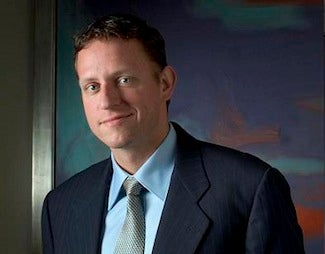
Peter Thiel – Back to the Future
Peter Thiel, famous as the co-founder of Paypal and one of the earliest investors in Facebook, gave a stern talk on the need for more people to join in the innovation and development of the future technologies instead of simply waiting on the sidelines. As a successful entrepreneur, Thiel advocates that it’s also not enough to simply innovate, but to also take developments to market, saying that one becomes an entrepreneur in order to solve a problem. Simply put, entrepreneurship is critical for bringing about the singularity. We simply cannot wait or depend on the government to pick and choose which industries/technologies it will support. Thiel was also not afraid to generate some controversy, making some harsh but accurate comments about the world’s most beloved technology company, Apple. He disagrees with Apple’s philosophy of designing great technology, but then hiding it, in essence making it akin to magic. He believes that this is not the way for the public to be involved with developing technology. He went on to say that society shouldn’t act as if Steve Jobs was the only person out there inventing things. He encourages everyone to be out there doing that, instead of simply being in awe of people like Jobs. Point taken.
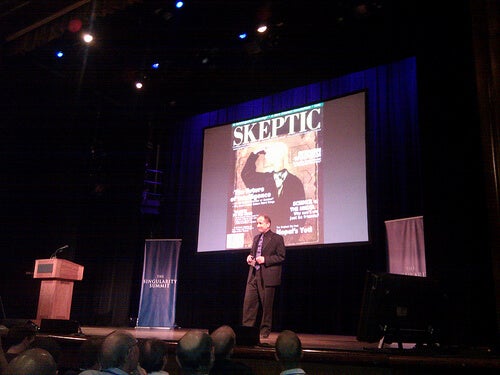
Michael Shermer – Social Singularity: Transitioning from Civilization 1.0 to 2.0
A fast-moving and very entertaining presenter, Dr. Michael Shermer brought an interesting perspective to the topic of the singularity and delivered it well. Founder of Skeptic magazine, Shermer challenged the audience to be cautious in their excitement about the singularity. Why? Well, it seems that every generation of people finds it easy to believe that they are the “chosen” ones that will experience a radical new human existence before their time to die. Sure, the viewpoint of singulartarians is more rooted in science than mythological and religious ideas, but that doesn’t matter. We need to be skeptical of our own point of view to avoid falling into the trap of tribalism, which Shermer claims lead to most of our social ills. Tribalism is simply the idea that we belong to certain groups and we protect those groups at the expense of others because they provide us with a sense of self. These include religious, economic, and political “tribes”. Shermer went on to show an endless number of graphs showing how everything is getting better. There is less war, less starvation, and less violent crime across the globe than in times past. There is an increase in lifespan, in levels of per capita GDP, multiculturism, and on and on. It truly was an uplifting talk! So what does Shermer think is behind this progress? Put simply, the growth of our moral nature. The more we travel and trade with other people, the less likely we are to fear them or attack them. The “tribes” we belong to are continually growing and until we reach a global unity where arbitrary divisions disappear – the social singularity – then we may not survive to reach the technological singularity! A very thought-provoking and optimistic presentation that seemed to captivate much of the audience.
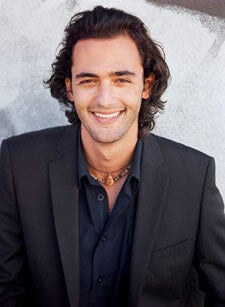
Jason Silva – The Undivided Mind: Science and Imagination
Jason Silva, a TV personality known as a host on Al Gore’s Current TV channel, gave a peppy presentation focusing on the need to package the idea and message behind the singularity in such a way that the general public will not only understand it, but also be excited by it. He showed a couple of video clips that featured a montage of fast-moving clips coupled with uplifting music and Silva narrating a philosophical outlook on what the future is shaping up to be. Check out one of those videos below. Jason summed up his talk with the quote “Articulate the future by utilizing a pop culture vernacular.” Basically, make the singularity sexy to get more people on board. It is too big a concept to be dominated by nerds!
THE BEGINNING OF INFINITY from jason silva on Vimeo.

Stephen Wolfram – Computation and the Future of Mankind
Dr. Stephen Wolfram presented on his work dealing with what he calls “the computational universe.” Of course, one cannot hear Wolfram speak without hearing about his discovery of “Rule 30”, an epiphany leading to his book “A New Kind of Science” and the computational search engine Wolfram Alpha. Wolfram is keen on his idea that mining the computational universe will inevitably lead to the sort of paradigm shift that the singularity represents. In speaking about himself, Wolfram generated some chuckles from the audience when he said that he is driven to deliver the future rather than just talk about it. This is something that other speakers also touched on, the need for more people to get involved in working on future technologies rather than just thinking and talking about them. We would all do well to follow Wolfram’s example!
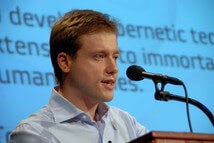
Dmitry Itskov- Project Immortality 2045 – Russian Experience
Dmitry Itskov presented on a new movement that he has founded to tackle the issue of human immortality. Itskov gave a somewhat nationalistic presentation, touching on many aspects of why Russia is poised to become the leader in the area of longevity. He described the work of famous Russian scientists that are the intellectual grandfathers of this movement and gave an open invitation to anyone who wanted to help grow it. As was a common theme throughout the 2-day summit, Itskov doesn’t think that the breakthroughs in the technology to bring radical life extension to market will necessarily come from government. Instead, he advocates grass-roots movements like Project Immortality that assemble the necessary scientists, thinkers, and financiers to see it through. Itskov closed his presentation by giving an timeline of when certain technologies should come online to make this goal a reality and is anticipating building a state-of-the-art research center in the next few years. Stay tuned!
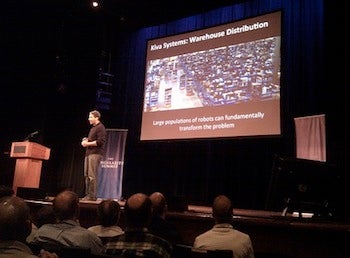
James McLurkin – The Future of Robotics is Swarms: Why a Thousand Robots Are Better Than One
Dr. James McLurkin, assistant professor of computer science at Rice University presented his work on swarm robotics, which is using a group of communicating robots rather than a single robot to address a problem. McLurkin’s work specifically focuses on development of distributed algorithms that can be used to affect behavior among such a group. The idea of swarm robotics comes from nature, where we witness insects such as ants and bees that can communicate and coordinate their efforts to accomplish a task that no individual could ever do alone. The emergent properties that arise from a coordinated group come from the transformative power of increasing population sizes. Thus, you can do things with a thousand robots that you can’t do with 10 and you can do things with a million robots that you can’t do with 10,000 and so. Soon after McLurkin described his research, he delighted the audience by doing a live demonstration using several of his robots. He would assign a task to the robots – find a treasure or line up in increasing numerical order after being assigned a number – and then the robots would communicate with each other to accomplish their task. To make the demonstration even more engaging, the robots would play a simple tune as they went about their work. However, McLurkin didn’t stop there. He showed videos that his research team put together showing some potential real-life applications of swarm robots (check out one of them below). For example, a large group of miniature robots programmed with the blueprint of a collapsed building could quickly search the rubble for survivors. And to be most efficient at this task, some robots would be assigned to be “place-markers” so that once an area has been searched, the remaining robots will know not to waste time there and instead venture to the unexplored parts of the building. As McLurkin put it, these multi-robot systems will use their physical configuration as a primary data structure. McLurkin closed his talk on a slightly different note, describing his efforts to bring these robots to K-12 classrooms in order to educate and inspire the next generation of scientists and engineers. And with Americans falling behind in math and science on the global stage, this kind of outreach is what’s needed to make science appealing and just downright fun!

Christof Koch – Neurobiology and Mathematics of Consciousness
I’ll start here by admitting that much of what Dr. Christof Koch had to say was over my head. However, I understood how profound it was and it appeared that the rest of the audience did as well, as evidenced by the number of questions he received afterwards. Koch, a professor of cognitive and behavioral biology at Caltech, studies how a conscious experience arises from the connection of neurons in the brain. How does the movement of electrical impulses from one nerve cell to another result in the subjective experience of seeing a color or hearing music? He began his talk by detailing what we already know about consciousness. It is associated with complex biological networks and it disappears during deep sleep. However, consciousness does not require behavior, emotions, long-term memory, language, selective attention, or even self-consciousness. So Koch studies consciousness using a reductionist approach. He wants to understand what the minimum level of organization is that gives rise to consciousness. In that regard, Koch and his colleagues have worked out a mathematical equation that may allow the calculation of consciousness. This equation is based on the observation that consciousness is both highly integrated and results from a highly differentiated state. So what does this all mean? If this equation actually works, it may allow us to determine if and when a computer can reach consciousness. And this is a very important philosophical question as we continue marching towards the singularity. One that will impact how we interact with and integrate these machines into our lives.
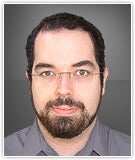
Eliezer Yudkowsky- Open Problems in Friendly Artificial Intelligence
Eliezer Yudkowsky, a research fellow at the Singularity Institute, gave a lively presentation about some issues that might be involved with creating an artificial intelligence (AI) that is fully capable of self-modification. He argues that just because we may eventually succeed in building this sort of AI (which he believes will happen) AND we are successful in making it a friendly AI (meaning it will not want to destroy our species), we simply can’t ensure that the subsequent AIs it produces will remain friendly. While it is a scary thought, Yudkowsky presented it more as a challenge to those who are working on developing this critical new technology. You can read more in-depth about Yudkowsky’s ideas in this online paper he authored.
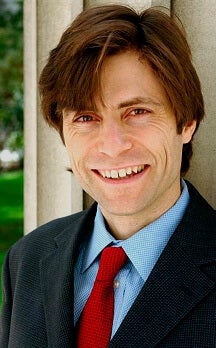
Max Tegmark – The Future of Life: a Cosmic Perspective
Dr. Max Tegmark, professor of physics at MIT, gave an engaging talk on taking a more long-term viewpoint when thinking about the future. And he really means long-term, as in the billions of years our sun is estimated to continuing burning for and where exactly the universe may be heading. Sure, most of us are convinced that the Big Bang adequately explains the origins of the universe, but do we know where it’s heading? The Big Rip or the Big Snap as the universe continues to expand until reaching some limit like a rubber band being stretched out? The Big Chill where the cooling of the universe continues until life can no longer exist? And while on the topic of life in the universe, Tegmark asked the audience if they thought that life exists anywhere besides Earth. He explained that although the common answer is “probably, since there are so many galaxies and planets and stars, etc”, he doesn’t think it is. And here is where he made a startling point: based on the Drake equation, there is some probability of intelligent life occurring outside of our planet. However, there seems to be a strong limit in the ability of an intelligent life to colonize and make contact outside of their respective corner of the universe. So the question is…where is that limit? Is it before the point of evolution we have reached? Or is it after the point of evolution we have reached? In other words, is the most difficult step evolving from single-celled organisms to intelligent and sentient multicellular organisms? Or is it evolving from this intelligence level and surviving long enough to colonize the galaxy and then the universe? A very profound question and one that should inform our decisions on a global level. Perhaps we are the greatest threat to ourselves and our potential to move beyond the limits of this planet.
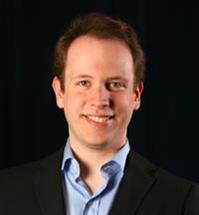
Alexander Wissner-Gross – Planetary-Scale Intelligence
Dr. Alexander Wissner-Gross, a research affiliate of the MIT Media Laboratory, presented on how we can predict where a AI with worldwide reach would come from. In his view, it would come from the finance and marketing industries. Wissner-Gross believes that since money is the great motivator and the finance and marketing industries are most concerned with predicting how to invest and how to sell to consumers, they have the greatest incentive to develop AI. Between these two industries however, Wissner-Gross believes that finance will reach this holy grail first, since that industry is flush with investment dollars and is currently very advanced technologically. And you don’t need to be a Wall Street financier to realize this. The speed at which financial information zooms around the planet, with high-speed computers running sophisticated software programs to analyze the markets and make instantaneous trades, is currently mind-boggling. So much so in fact, that regulatory bodies like the US Securities and Exchange Commission are playing catch-up to make sure that these investment firms are playing within the rules. Wissner-Gross says that the singularity will likely play out in a manner similar to what we’re seeing with the role of increasingly sophisticated programs in the finance world and we had better start paying attention.
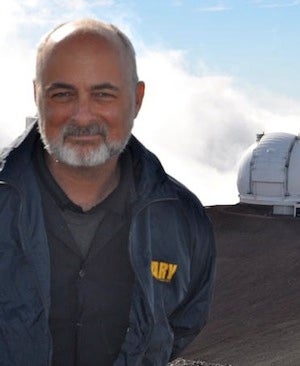
David Brin – So you want to make gods? Now why would that bother anybody?
Dr. David Brin gave a light-hearted presentation on how to talk about the singularity to religious folks who might not be so open to some of the ideas involved with it. Like immortal human-machine hybrids or almost god-like AIs. Similar to what other speakers echoed, Brin acknowledged it’s unclear why we haven’t had interactions with other intelligent beings in the universe. He proposed that perhaps the anti-science, anti-intellectual crowds can also be found in other parts of the universe and they have, so far, been able to keep their civilizations grounded. Yikes! That doesn’t sound like a bright outlook on the future, but it is a plausible one. Brin believes that it will take a creative engagement with skeptics to make the possibilities of the future a reality. Are you doing your part?
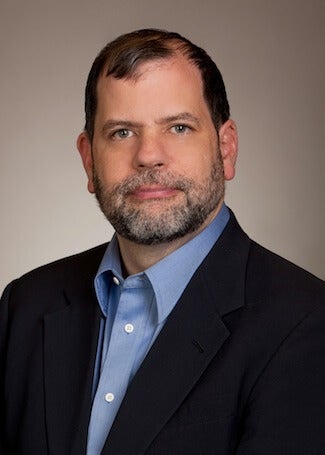
Tyler Cowen – The Great Stagnation
Tyler Cowen, professor of economics at George Mason University, gave everyone a wake-up call from the sweet dream about future technologies. Cowen asserts that the US is experiencing a stagnation in innovation that wasn’t apparent even just a couple of generations ago (check out a similar talk he presented at TEDxEast in May 2011 below). What’s more, science is losing its luster among the general public for a variety of reasons, among them the growing gap in income levels between scientists and those in other, more lucrative fields such as finance. This has led to more and more of the brain power moving away from the sciences at a time when innovation and invention are desperately needed to get us past the problems that plague humanity. All these factors put together mean a bleak future for the US unless things change.
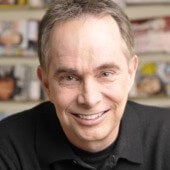
John Mauldin – The Endgame Meets the Millennium Wave
John Mauldin gave an interesting presentation on the economics of the upcoming singularity, although he started by talking about the economic crisis facing not only this country, but also the world. He predicts that the debt problems facing Greece and Spain are only the start and things will likely get a lot worse before they get better. Mauldin believes that the biggest bubble in the world is getting ready to break and that’s the bubble of government spending. He went on to highlight the 7 waves of change that he believes will occur in the next 20 years and noted that humans didn’t evolve for rapid change, so be ready! These waves include high-speed ubiquitous bandwidth that will be ultra cheap, effectively bringing billions of new people to the marketplace. They also include a revolution in biotechnology that will allow us to live longer and the rise of the sovereign individual as more and more people realize that government simply can’t solve all of our problems. Mauldin also foresees revolutions in nanotechnology, robotics, and AI (not surprisingly). Finally, Mauldin implored the crowd to think about the repercussions of these waves of change: new customers for businesses, changes in geo-political realities (i.e. borders), build-up of infrastructure and replacement of scarce resources with cheaper, abundant resources.

Riley Crane – Rethinking Communication
Dr. Riley Crane, a postdoctoral fellow at the MIT Media Lab, gave an excellent presentation on harnessing social media and aggregating the wisdom of the crowds to affect positive change. He accurately likened it to finding a path through a forest; the path is formed by many people walking over it time and time again. Crane is most famous for leading of team from MIT in winning DARPA’s network challenge using a viral networking scheme that resulted in them solving the puzzle in less than 9 hours (check out his interview on the Colbert Report below). However, this idea of using crowd-sourced knowledge is really nothing new. Every time you start typing a phrase into Google, suggestions pop up based on what other people have searched for. Further, Google and other entities have begun tracking flu outbreaks based on internet searches and posts on social media sites such as Twitter. However, Crane wants to take this to the next step. He highlighted the story of several people trapped in a building after the recent Haitian earthquake and that rescuers used a combination of Twitter posts and GPS coordinates to find their location. Crane contends that the very way we communicate with each other is changing at a rapid pace and it’ll be exciting to see just what’s around the corner.
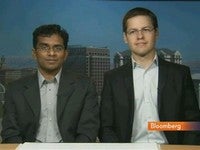
Scott Brown and Dileep George – From Planes to Brains: Building AI the Wright Way
Another presentation on artificial intelligence, this time from 2 guys with a new start-up taking a unique approach. Scott Brown and Dr. Dileep George, founders of Vicarious Systems, tag-teamed this presentation about the science, engineering, and business behind their company. Their approach is akin to what the Wright brothers did for flight in that although they took inspiration and insights from the way birds soared, they didn’t try to fly by using an airplane that had flapping wings. In the same manner, although AI development is based on a human brain, it doesn’t need to function in exactly the same manner. Instead Vicarious Systems seeks to exploit the underlying assumptions the brain uses to process information for building AI. George went on to explain how neuronal processes involved in keeping the cells alive, communicating with other neurons, and processing information are found in all levels of brain organization. However, the goal of AI development is to just tease out the information processing ability of neurons to replicate. The other abilities of the neurons are irrelevant. With a substantial amount of funding from some big names in Silicon Valley, it seems that the Vicarious approach to AI development is resonating with many people. Keep an eye on these guys!
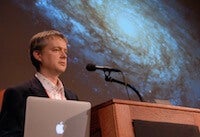
Jaan Tallinn – Balancing the Trichotomy: Individual vs. Society vs. Universe
Jaan Tallinn, of Kazaa and Skype fame, gave a humorous presentation where he talked about his next big goal: to meet the challenges associated with increasingly advanced technology. Tallinn dissected the sometimes conflicting interests of the individual vs the current society vs the future society. In essence, the development of many of the technologies talked about during this summit are easy to see for their value in society. However, either through malevolent intent or lack of foresight, these technologies can also bring plenty of negative consequences. So instead of just talking about these existential risks we face as a species (which he classifies as Level 3 risk), Tallinn has given himself 3 tasks to lower these risks: donating, research, and evangelizing. He specified that he wants to encourage more researchers and innovators to not only ask “How do we build an AGI?” but also “How do we make an AGI do what we want?” According to Tallinn, the future isn’t necessarily dependent on societies, but on the individuals that make up that society. In closing, Tallinn urges more of us to be not only cognizant of these Level 3 risks, but to do our part in fixing these problems before it’s too late. Donate. Research. Evangelize.
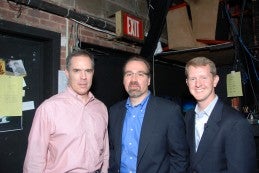
IBM’s Watson: Research, Commercialization, Application
I’ve lumped the last 3 talks of the summit into this section since they all dealt with IBM’s Watson supercomputer from different angles. First, David Ferrucci, lead developer of Watson, talked about what it was like to work on the project. He gave some specifics on Watson that were mind-boggling: 2,880 cores, 15 terabytes of RAM, and 80kW of power! To compete against human brains that run on a tuna fish sandwich and a glass of water. We might have the edge on energy efficiency so far, but it’s noly a matter of time. Ferrucci also talked about the separate development team that focused solely on Watson’s “pun detector” for Jeopardy! so that it would understand a clue about a holy city referring to St. Paul, MN and not just the Vatican.
Next, Dan Cerutti, general manager of IBM’s Watson commercialization group, talked about the next potential fields where we might see Watson working. After all, it wasn’t just built to play Jeopardy! The most likely applications are in the finance world (see Wissner-Gross’s presentation) and the healthcare field. While IBM isn’t looking to replace human doctors just yet, there is a place for Watson alongside clinicians, helping to track and diagnose patients, and helping to reduce costs and mistakes along the way. Other potential applications include the legal world, with the loads of text and notes that need to be analyzed as well as education and customer service.
The final talk of the summit was Ken Jennings, who talked about what it was like to play against Watson…and lose! This might have been the funniest of all presentations and Jennings really had a great stage presence. It was light-hearted and very informative as to the behind-the-scenes workings of Jeopardy! Jennings did, however, take the time to address some topics related to the singularity. He voiced some concern that our over-dependence on technology was making us dumber and cited some studies that had actually shown atrophy of the hippocampus in response to less use and conversely, it’s growth when stimulated, as in the taxi drivers of London, who are tasked with the daunting job of navigating the city’s busy streets. So a bit of a serious and cautionary tone but overall, a great presentation. And one that got plenty of positive responses from the audience!
[Sources: Singularity Summit, Wikipedia]
[Image credits: Singularity University, David Orban, Kris Krug, Singularity Summit, Lifeboat Foundation, Wikipedia, Project Immortality 2045, Lightspeed Magazine, KurzeilAI.net, Bloomberg]
[Video credits: TEDxEast, Jason Silva, James McLurkin, Comedy Central]



